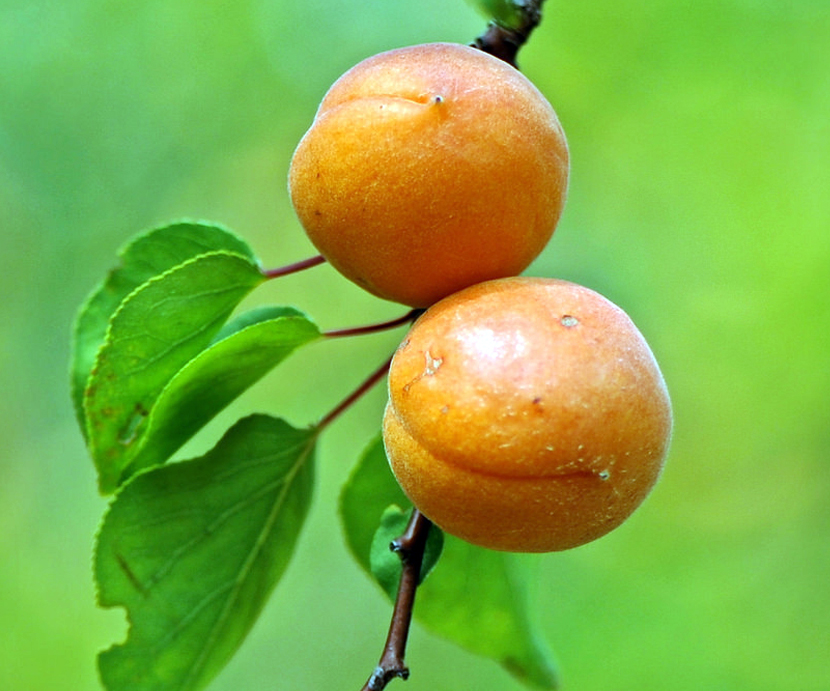
| Name | Apricots |
|---|---|
| Scientic Name | Prunus armeniaca |
| Native | China (Qinghai, Gansu, Shaanxi, Hebei, Liaoning) and maybe also Korea and Japan. Local farming in China dates back over 3,000 years ago. It was distributed to Asia Minor and was presented to Europe from Greece and Italy by the Romans. English travellers introduced Apricot into North America and in California by Spanish missionaries. |
| Commom/English Name | Apricot, Chinese Almond, Common Apricot, Siberian Apricot, golden eggs of the sun |
| Name in Other Language | Albanian : Kajsi Argentina : Damasco Armenian : Tziran Bosnian : Kajsija Brazil : Abricó, Damasco, Damasqueiro( Portuguese ) Catalan : Albercoc Chile : Damasco Chinese : Ku Xing Ren, Xing, Xing Xin Shu Croatian : Kajsija Czech : Meruňka, Meruňka Obecná Danish : Abrikos, Almindelig Abrikos Dutch : Abrikoos Eastonian : Aprikoos, Harilik Aprikoosipuu Esperanto : Abrikoto Finnish : Aprikoosi French : Abricotier, Abricotier Commun German : Aprikose, Aprikosenbaum, Marille Greek : B e r ί k o k o Haitian : Zabriko Hungarian : Kajszibarack, Sárgabarack Icelandic : Apríkósa Iran : Zard-ālū Irish : Aibreog Italian : Abricocco Comune, Albicocco, Armenillo Japanese : Anzu Korean : Sal-Goo, Hoeryngbaeksalkunamu Kurdish : Mijmij, Qeysî, Zerdelî, Hêrûg Latvian : Aprikoze Lithuanian : Abrikosas Maltese : Berquqa Norwegian : Aprikos Polish : Morela Portuguese : Damasco, Damasci Italbrac, Damasqueiro Roman : Kajsija, Zerdelica Romanian : Caisă; Russian : Abrikos Obyknovennyj; Slovenia : Marelica, Marhuľa Obyčajná; Spanish : Albaricoque, Albaricoquero, Albercoquer, Chabacano, Chabacano Italbrac Mexico, Damasco, Damasquino, Damasquillo; Swedish : AprikosTurkish : Kayisi |
| Plant Growth Habit | Tree size: Small- to medium-sized tree,
Trunk: up to 40 cm (16 in) in diameter and a dense, spreading canopy |
| Growing Climate | Slightly more cold-hardy than the peach, tolerating winter temperatures as cold as −30 °C (−22 °F) or lower if healthy. |
| Soil | Prefer well-drained soils with a pH of 6.0 to 7.0, mountainous slope soils |
| Plant Size | 8–12 m (26–39 ft.) tall, |
| Bark | Grayish brown, longitudinally splitting bark |
| Branchlets | Young branchlets are reddish brown and lenticellate |
| Leaf | Ovate, 5–9 cm (2.0–3.5 in) long and 4–8 cm (1.6–3.1 in) wide, with a rounded base, a pointed tip and a finely serrated margin. |
| Flowering Season | During the spring |
| Buds | Purplish red, ovoid, glabrous or puberulous |
| Flower | 2–4.5 cm (0.8–1.8 in) in diameter, with five white to pinkish petals; bisexual , produced singly or in pairs in early spring |
| Fruit Shape and Size | Drupe alike to a small peach, totally matured fruit can be between 1.5 cm to 2.5 cm & 4-5 cm in diameter, from yellow to orange, frequently tinged red on the side most exposed to the sun; its surface can be smooth (botanically described as: glabrous) or velvety along with very short hairs |
| Fruit Weight | Around 35 g |
| Fruit Color | Pale green when young which turns into fleshy, succulent, white, yellow or orange colored outer layer after mature |
| Flesh Color | Usually firm and not very juicy, crunchy |
| Fruit Peel | Thin outer skin |
| Flavor/Aroma | Sweet flavor similar to plums |
| Fruit Taste | Range from sweet to tart |
| Seed | Seed is surrounded in a hard, stony shell, often called a “stone”, with a grainy, smooth texture |
| Varieties/Types | Chinese Apricot, Gold Cot, Tilton, Wenatchee, Goldbar, Gold Kist, Tomcot, Autumn Glo Apricot, Autumn Glo Apricot, Blenheim (Royal) Apricot, Bongo Fruiting-Flowering Apricot Prunus mume ‘Bongo’, Brittany Gold Apricot, Canadian White Blenheim Apricot, Earli-Autumn Apricot, Flavor Giant Apricot, Flora Gold Apricot, Harcot Apricot, Harglow Apricot, Hunza Apricot, Katy Apricot, Mokel Fruiting-Flowering Apricot Prunus mume ‘Mokel’, Moorpark Apricot, Nugget Apricot, Patterson Apricot, Perfection Apricot, Pixie-Cot Miniature Apricot, Puget Gold Apricot, Rival Apricot, Royal Rosa Apricot |
| Season | Available during May through August |
| Major Nutrition | Nutrients: Protein 2.31 g (4.62%), Total Dietary Fiber 3.3 g (8.68%), Total lipid (fat) 0.64 g (1.83%), Carbohydrate 18.35 g (14.12%) Vitamins: Vitamin A 158 µg (22.57%), Vitamin C 16.5 mg (18.33%), Vitamin E 1.47 mg (9.80%), Vitamin B5 0.396 mg (7.92%), Vitamin B6 0.089 mg (6.85%), Vitamin B3 0.99 mg (6.19%), Vitamin B2 0.066 mg (5.08%), Vitamin K 5.4 µg (4.50%), Vitamin B1 0.05 mg (4.17%), Vitamin B9 15 µg (3.75%),Minerals: Copper 0.129 mg (14.33%), Potassium 427 mg (9.09%), Iron 0.64 mg (8.00%), Manganese 0.127 mg (5.52%), Phosphorus 38 mg (5.43%), Magnesium 16 mg (3.81%), Zinc 0.33 mg (3.00%), Calcium 21 mg (2.10%) Amino Acids: Leucine 0.127 g (3.44%), |
| Health Benefits | Beneficial for healthy eye, prevent alzheimer’s disease, prevent colitis, cure colon inflammation and ulcers, antioxidant benefits, supports a healthy metabolism, prevents muscle spasms and pain, thickens hair, bone health, apricot scrub, acne |
| Calories in 1cup (165 gm.) | 79 Kcal |
| It is said that |
|
| Precautions |
|
| How to Eat |
|
| Other Facts |
|
Apricot (Prunus armeniaca) Scientific Classification
| Scientific name | Prunus armeniaca |
|---|---|
| Kingdom | Plantae |
| Subkingdom | Tracheobionta |
| Order | Rosales |
| Family | Rosaceae |
| Genus | Prunus L |
| Species | Prunus armeniaca L. |
| Super division | Spermatophyta |
| Division | Magnoliophyta |
| Class | Magnoliopsida |
| Sub Class | Rosidae |
Comments
comments